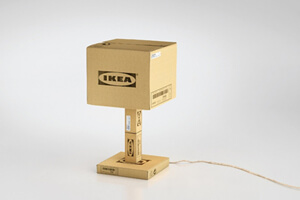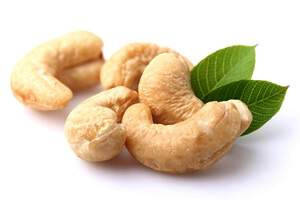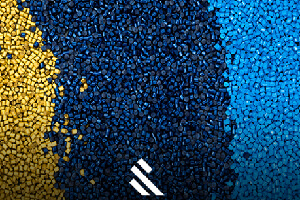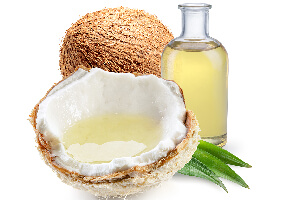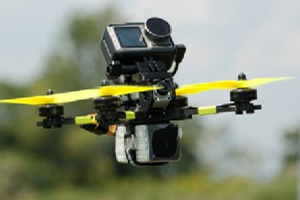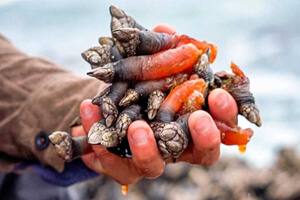Why Japanese Chef’s Knives Are So Expensive
Narrator: Japanese chef’s knives are world-renowned for their unique design and durability. And just one can cost you over $900. From heating and hammering the metal to sharpening the knife’s edge and polishing the final blade, these are only a few of the skills a Japanese artisan spends a lifetime learning to master. So what makes these knives so coveted? And why are they so expensive?
Takamura Terukazu: The soul of the person who made it and uses it resides in a knife. “This is a knife that my mother used.” That’s a Japanese knife.
Narrator: Terukazu has spent 37 years crafting chef’s knives at his family’s factory in Echizen. Each one goes through 100 production stages. It’s a process that requires over 10 years of practice.
Takamura Terukazu: You can find inexpensive knives at supermarkets for 2,000 yen (around $18.37). But the knives we make, people bring a knife that my grandfather made, asking for it to be sharpened. It’s astonishing. That’s how long you can use it for.
Narrator: Compared to popular European chef’s knives, Japanese blades are lighter and sharper, allowing for more precise cuts. On the low end, most Takamura blades cost a couple hundred dollars. But custom-made pieces can sell for 15 times that. One of the most expensive knives produced by the shop sold for $6,900.
Takamura Terukazu: Mainly three things are important to kitchen-knife making. First is quality materials. Next is quality hammering. Lastly, quality grinding. Without the three, if even one is missing, there would not be a good knife.
Narrator: Takamura Hamono was one of the first knife makers to use a certain kind of stainless steel called high-speed powdered steel. It was originally designed for power tools, like saws and drills, because of its durability and strength – two qualities Japanese chef’s knives are known for today.
Once the metal is cut, it’s heated in an electric oven to harden and strengthen the blade. Then the hammering begins. At this point, the artisan relies on experience and instinct to guide them in producing a blade of ideal strength and thinness. Hammering leaves behind circular indents, something knife makers in the past typically polished away. But 60 years ago, Terakuzu’s father and his colleagues discovered the benefit of knives with a textured surface, like this.
Takamura Terukazu: Through hammering, the surface becomes uneven, right? That wouldn’t be good. So normally, you harden, sharpen, and polish it. But they found that things didn’t stick to the knife when you had an uneven surface. Normally, potatoes and carrots stick and they don’t easily fall off. But with an uneven surface, they fall off so easily.
Narrator: This hammered finish, called tsuchime, allowed chefs to chop ingredients quickly and more efficiently. It also added a beautiful aesthetic to each blade, another element highly valued in Japanese knives.
Takamura Terukazu: Nowadays, you can find knives with a tsuchime finish around the world.
Narrator: But a Japanese chef’s knife wouldn’t be nearly as valuable without its supremely sharp edge. An artisan presses the blade against a rough grindstone made of natural rock, a sharpening material you’ll only see used in Japan. This step distinguishes an artisan’s skill and ultimately sets a knife’s final value.
Takamura Terukazu: You sharpen it by the sense of force exerted on your hand, sounds, and sensations. All of this differs for each piece. The surface of the grindstone is different after sharpening a piece. We say it takes three years to learn to hammer and a lifetime to learn to sharpen.
Narrator: It takes one full day to sharpen the blade and another full day to secure and polish the handle. The final knife is totally unique – each with its own distinct balance, thickness, and design.
Takamura Terukazu: Chefs often express they want a knife to be an extension of their hands. So we devise that balance in a knife so that you can execute a cut where you want to bring the knife to. It’s a knife that you can treat like your own fingers.
Narrator: Several of the world’s best chefs use Takamura’s knives, from René Redzepi at Noma to Massimo Bottura at Osteria Francescana. Another one of those chefs is Masakazu Fujii. He uses Takamura’s knives to prepare fish at his restaurant in Fukui.
Masakazu Fujii: Similarly, when an artist chooses the main guitar or the sub guitar for a live concert, there would be a guitar tech, too. Then the performer gets to focus on the performance. Mr. Takamura is doing that for me. You can see a shine on the cut. If I used a knife that doesn’t cut well, this wouldn’t come out. If you cut it without exerting any stress, it turns out this way. The moisture is about to come out from the cut, but it’s contained. It comes out when you bite inside your mouth.
Narrator: Echizen has been the center of high-quality knife making since blacksmiths began crafting chef’s knives here 700 years ago. And today, the city is internationally recognized for its cutlery production. But before knives, artisans made swords – another valuable trade in Japanese culture.
Takamura Terukazu: Japanese swords are thin. Yet they never break, because there is soft iron inside. Hard steel covers the outside. This double structure prevents the sword from breaking. Japanese kitchen-knives make use of this technique. Hard steel is in the middle with both sides wrapped with soft iron.
Narrator: Despite dedicating decades to this craft, Terukazu and his brothers weren’t always set on becoming master knife makers.
Takamura Terukazu: My immediate younger brother and my youngest brother are working here, too. Originally, I wanted to become a rock singer. My brother wanted to become a motorcycle race driver. But once we reached a certain age and reflected on our background and saw the knives themselves, I developed not only the obligation but the desire to pursue this.
Narrator: Professional chef or not, getting your hands on one of Takamura’s knives could take years. With that kind of wait time, coupled with the decades of training required to master this craft, it’s likely these pieces will remain costly for years to come.
Takamura Terukazu: There are people who have waited two and a half years for a piece, because it takes that much time. But once they have the piece and use it, then they think it’s great. They say they can’t use any other knives anymore. That makes me happy.



